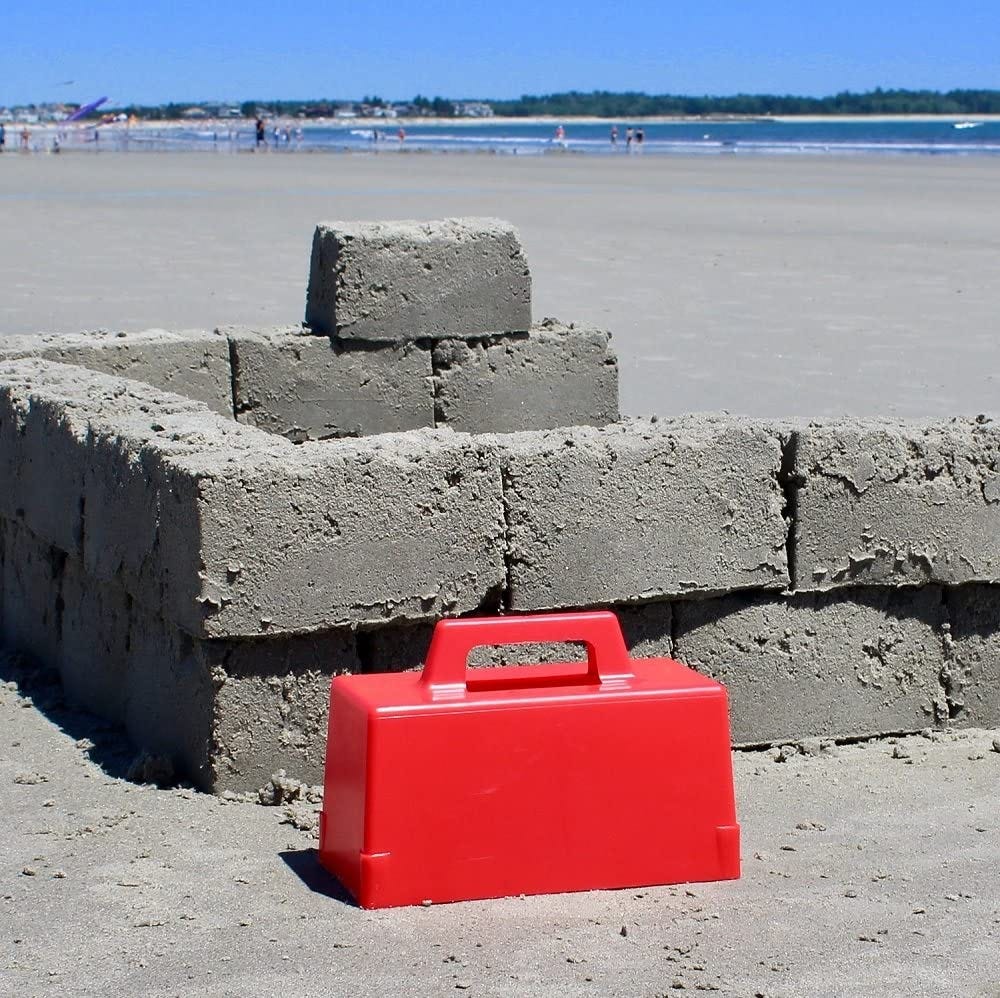Institutions: Real: The Peace Corps
Gadgets: Mechanical: Compressed Earth Blocks Machine
Toys: Sand-Brick Maker
Reservations Recommended, Chapter 3
“Harold is an engineer,” Matthew says. “He does the engineering work on our toys.” Harold says nothing, but there’s such hunger in his eyes that Matthew, for the briefest instant, sees Harold as he must have been as a boy. He can see the face of the little Harold, fat, like the little Matthew, a boy without playmates, hungry for a friendly word, and he feels a sudden compassion for him. “Frankly,” Matthew says, “he’s a genius. He came up with a brilliant design for this brick maker I’m presenting in a couple of weeks — ”
“Now really, it was your idea, Matthew.”
“Oh, but it was just an idea. You made it work. And with a design of — well — elegant simplicity.”
“I stole it.” […]
“When I was in the Peace Corps — ”
“You were in the Peace Corps?” asks Matthew.
“Yes indeed. I built housing; that is, I taught people how to build housing. Rammed-earth housing. We had wordless comic books that showed how to build a ram to make mud bricks and then build a house out of the bricks. Your sandcastle brick maker is the grandchild of that ram.”
Peace Corps, A Handbook for Building Homes of Earth, Chapter 9, “Making Pressed Earth Blocks”:
The CINVA-Ram was developed by the Inter-American Housing and Planning Center (CINVA) at Bogota, Colombia, in 1952. It is operated by manually applying pressure on a long lever arm. It produces blocks which are 111⁄2x51⁄2x31⁄2 inches (either hollow or solid) and will also produce 111⁄2x51⁄2x11⁄2 inch tiles for roofs or floors. The long lever arm arrangement produces dense, high-quality blocks. […] Three men, doing all of the work, including processing, mixing, molding, etc., should make 300 blocks a day. Five workers can make 600 per day by dividing the jobs.
The real-world toy industry seems never to have produced a pressed-sand-block maker on the lines of the CINVA-Ram. My searches found only a simple container that produces blocks pressed by nothing stronger that a child’s hands, blocks that are not likely to survive high tide. You can buy this one at Amazon if you’d rather not drag an actual CINVA-Ram to the beach:
You can watch a child making sand blocks with it here: https://www.amazon.com/vdp/e701cb3c434f4467b213f925e7c4591b
See also:
Gadgets, Electronic TG 83; TG 84; TG 433; Car Phone TG 439; Kitchen TG 457; Personal Computers TG 466; Hyperlinks and Hypertext and Hypercard TG 466
Institutions: Fictional: National Preparedness Foundation, New Mexico College of Agriculture, Technology, and Pharmacy TG 447
Institutions: Real: National Science Foundation, New Mexico Institute of Mining and Technology TG 447
Have you missed an episode or two or several?
You can begin reading at the beginning or you can catch up by visiting the archive or consulting the index to the Topical Guide.
You can listen to the episodes on the Personal History podcast. Begin at the beginning or scroll through the episodes to find what you’ve missed.
You can listen to “My Mother Takes a Tumble” and “Do Clams Bite?” complete and uninterrupted as audiobooks through YouTube.
You can ensure that you never miss a future issue by getting a free subscription. (You can help support the work by choosing a paid subscription instead.)
At Apple Books you can download free eBooks of Little Follies and Herb ’n’ Lorna.
You’ll find overviews of the entire work in An Introduction to The Personal History, Adventures, Experiences & Observations of Peter Leroy (a pdf document) and at Encyclopedia.com.



